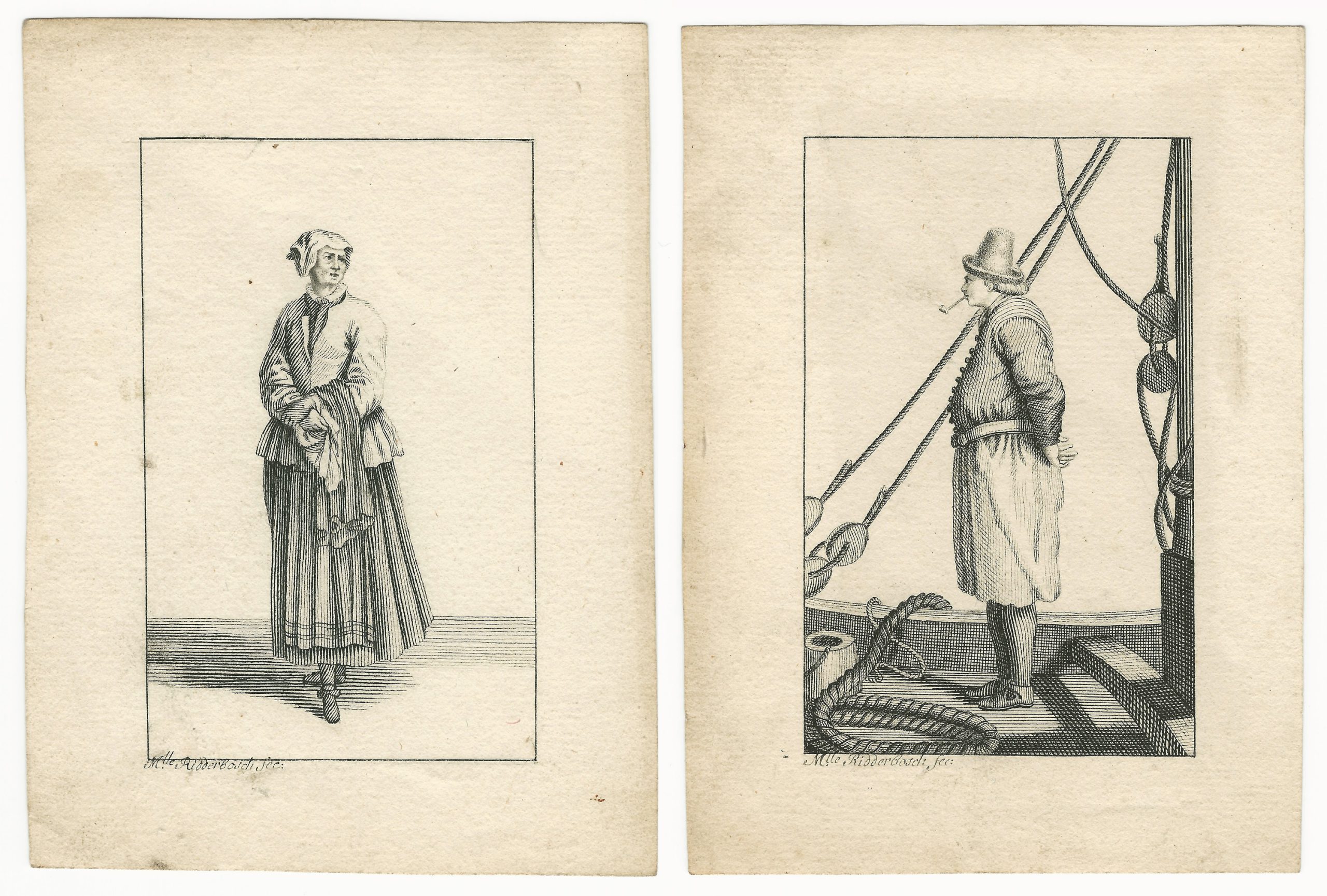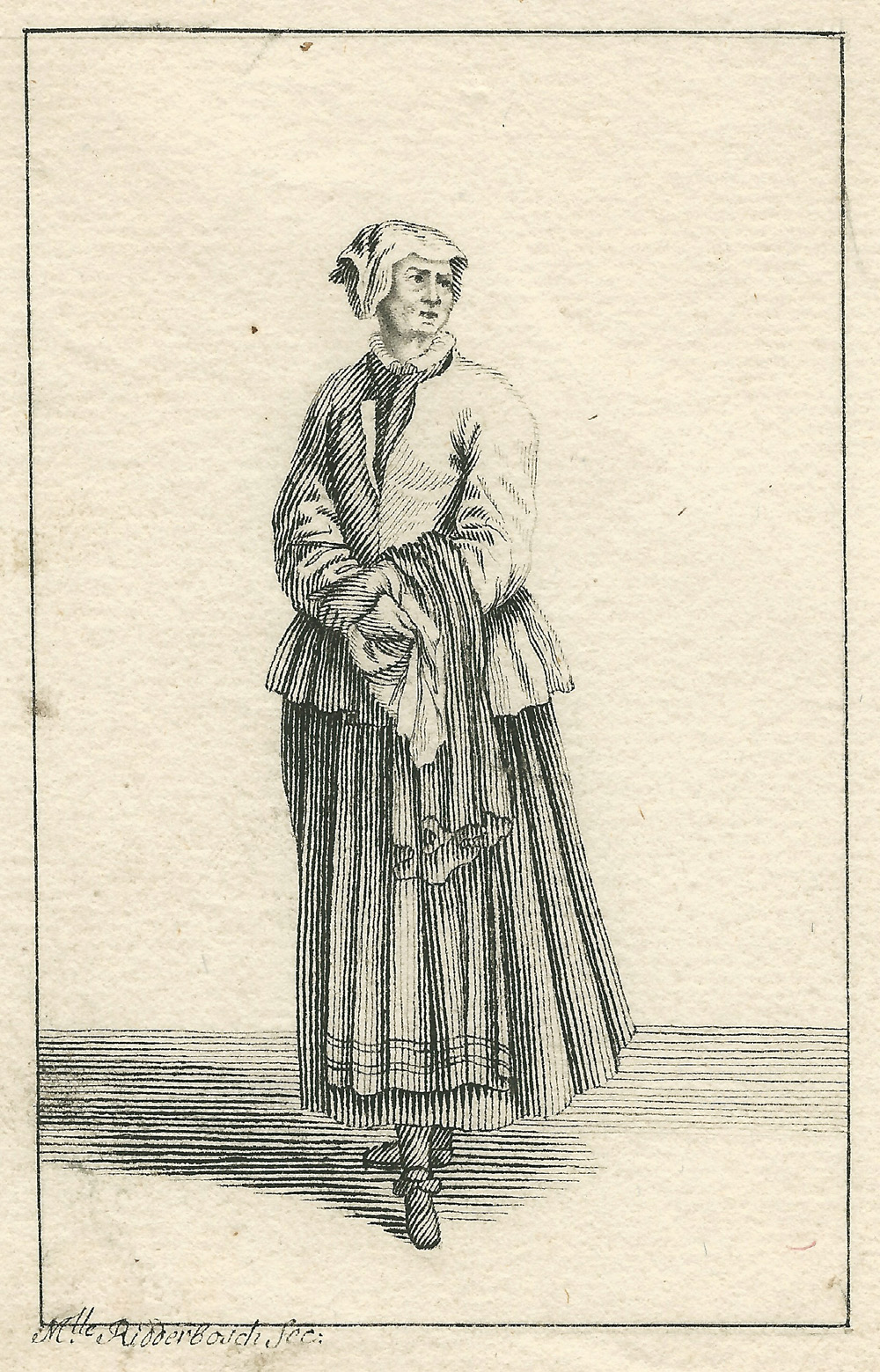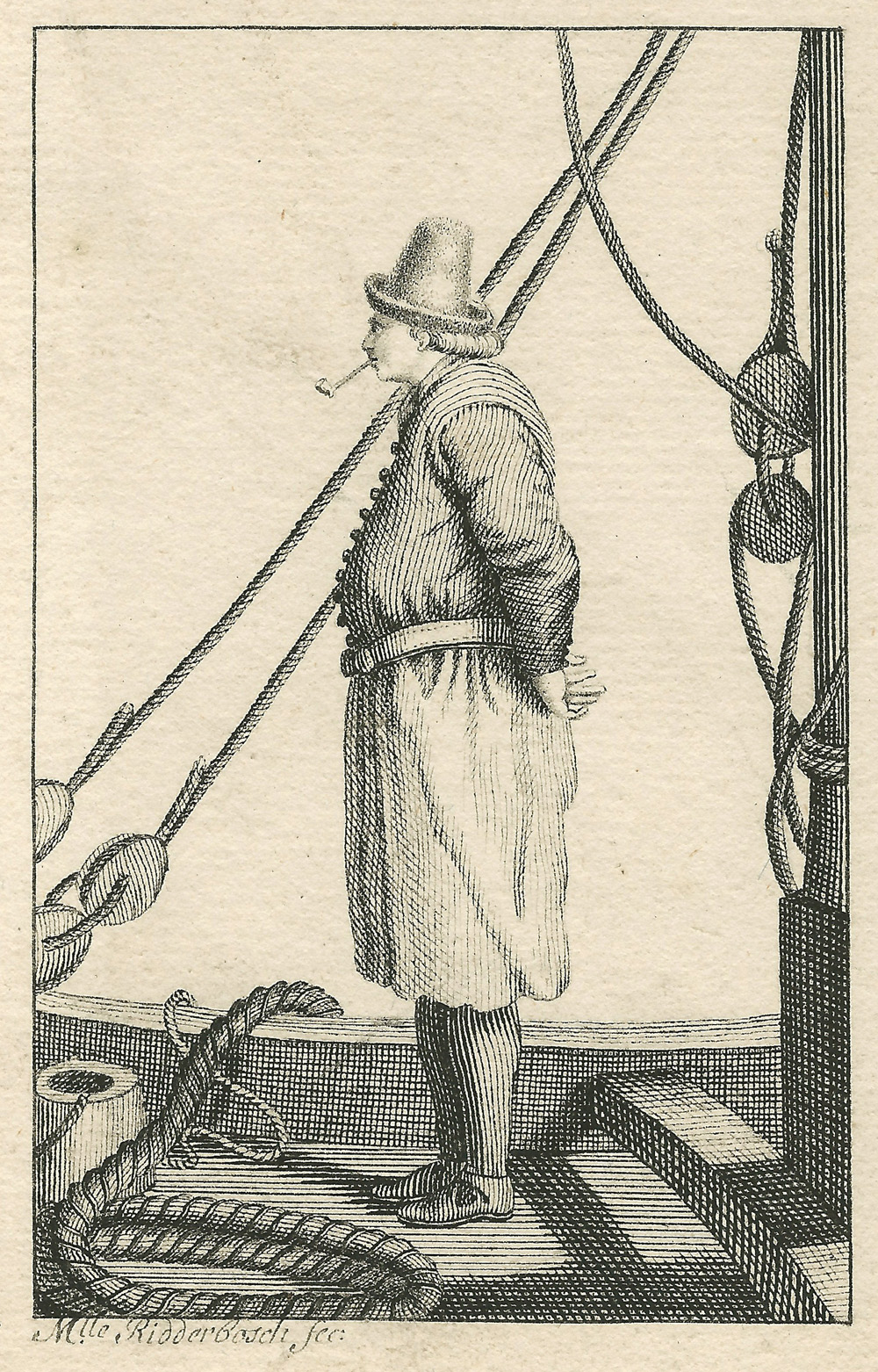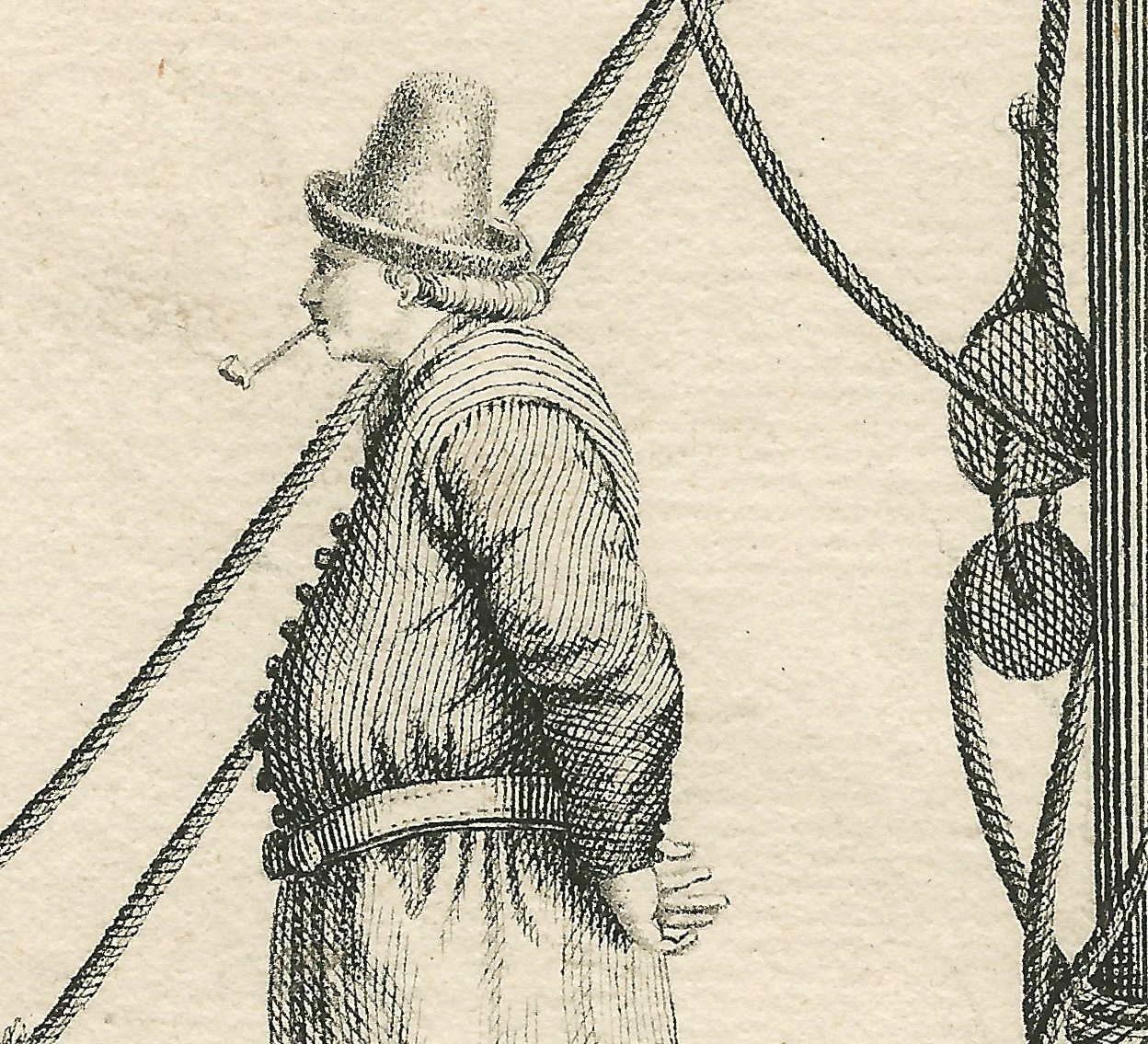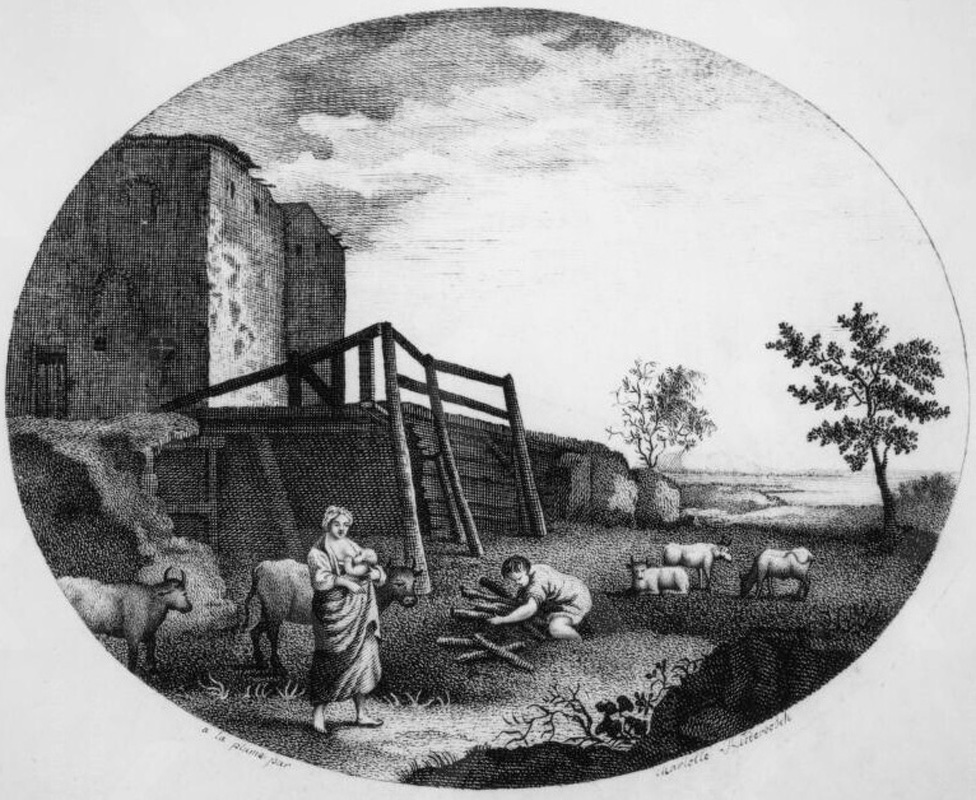CHARLOTTE RIDDERBOSCH (Ghent 1750 – 1810 Ghent)
Charlotte Ridderbosch (Ghent 1750 – 1810 Ghent)
A Fisherwoman Standing and A Fisherman Smoking
Both pen ank black ink, 143 x 106 mm (5.6 x 4.2 inch) (sheet size); 105 x 66 mm (4.1 x 2.6 inch) (image size)
Both signed ‘Mlle. Ridderbosch fec:’
Provenance
Private collection, The Netherlands
***
Charlotte Ridderbosch was born as one of the fifth children of Josse Ridderbosch and Joanna Philippe Goossens.1 Father Josse (1718–1801) was originally active as a schoolmaster and wrote verses in Flemish and Latin. In 1763 he entered the service of Charles Marie Raymond, 5th Duke of Arenberg, who kept a household of princely stature. Charlotte was baptised as Carola in 1750 and was one of three of the couple’s children to practise as an artist. Charlotte married the aristocrat Nicolas de Ciplet in Edingen, and also worked for the Arenberg family, as her father had done, although in Charlotte’s case she probably worked more on the basis of a talented amateur rather than professional artist, especially given her marriage to a noble husband.
Only a small number of drawings by the artist is known. They are invariably signed, sometimes as ‘Mademoiselle Ridderbosch’, as in our drawings, and sometimes in full as ‘Charlotte Ridderbosch’. She favoured a drawing style that imitated printed engravings, and may have used special black printing ink to execute her drawings, rather than the normal drawing ink that has over time nearly always turned to brown. Drawings in imitation of engravings were especially popular in early 17th-century Mannerist Haarlem, popularised by Hendrick Goltzius (1558–1617) and his circle, but were quite rare in Charlotte’s period.
Several drawings by Charlotte Ridderbosch are preserved in the Royal Library of Belgium in Brussels, including a sheet representing a rural scene of a farm with a woman holding a child and a man gathering wood, which is inscribed and signed ‘A la plume par / Charlotte Ridderbosch’, and is comparable in handling to our two charming drawings.2 The ‘A la plume’ (drawn by pen) was obviously added by the artist to stress that this was indeed a drawing and not a print, as it would appear to be at first sight.
SOLD TO THE MUSEUM OF FINE ARTS, GHENT, BELGIUM
1. For the artist, see L. Vande Casteele, ‘Women artists in Ghent at the End of the Ancien Régime’, Jaarboek Koninklijk Museum voor Schone Kunsten, Antwerp 2000, pp. 209-30.
2. Pen and black ink, drawn oval, dimensions unknown, Koninklijke Bibliotheek van België, Brussels, inv. no. F37980; Vande Casteele, op. cit., fig. 13.
